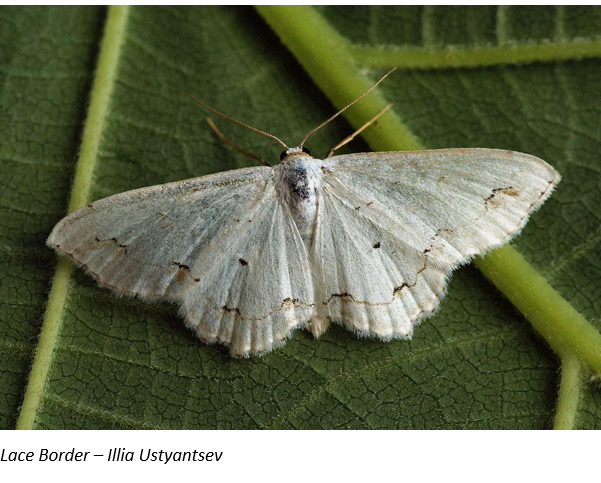A new rare and beautiful species of moth appears to have colonised the South Downs.
The day-flying Lace Border moth is thought to have flown across the Channel from the continent and found suitable locations for breeding and feeding at sites in the South Downs National Park near Eastbourne.
After first spotting the beautiful, white moth in 2020, butterfly expert Bob Eade has confirmed the moth has survived another winter and is back at the site. Bob, who has enjoyed visiting the site for decades said:
“While out taking photographs I spotted a small white moth land nearby. Straight away I could see it was a moth I had never seen before, but at the time I didn't know what it was. I only managed one quick photograph before it flew and landed in the middle of some very dense scrub. When I got home, I checked the books against the photo, and it was clear it was a Lace Border. The next day I returned and saw three. This year I have seen more than 30 in this same area.”
Since 1976 only four Lace Border moths had been seen in Sussex, so Bob’s discovery and subsequent counts suggest it has successfully established a colony and become established on the South Downs.
The site where the moth was discovered, Frog Firle Farm, is owned and managed by The National Trust.
It is thought that climate change might be a factor in this recent colonisation. The moth’s foodplants (Marjoram and Thyme) have been common and widespread across the Downs for many years but the moth has never previously become established.
The Lace Border is found on the North Downs in Kent and Surrey and at two other UK sites (Norfolk and Gloucestershire). This recent colonisation represents a new species for Sussex and for the South Downs National Park.
Tim Squire, a Ranger for the Eastern Downs of the National Park, said: “The South Downs has always been a national haven for butterflies and moths and this discovery adds another species to a very long list. The Lace Border moth is a real beauty and it’s amazing to see it in the south of England. Climate change may well be one of the factors here, so it’s also a sober reminder that research and regular wildlife monitoring are absolutely vital to help manage our fragile habitats.”
Butterfly Conservation’s Regional Conservation Manager for the Southeast of England, Dr Paul Tinsley-Marshall commented “We encourage people to look out for this distinctive and beautiful white moth. If this colonisation is a response to climate change, it might have also colonised other sites in the National Park. By gathering more data, we can better assess these impacts and the changing fortunes of our wildlife.”
A small colony has also been found at Friston Gallops, managed by Forestry England. Daniel Cooper, Assistant Ecologist at FE, commented on the project at the site: “The project aims to boost the wildflower population through a new sward management scheme, including low-intensity grazing, hay cutting, and wildflower seeding targeted at maintaining high-quality chalk grassland habitat. This management will benefit the recently colonised Lace Border moth which has been found on the site in the last two years thanks to monitoring by volunteers from Seaford Natural History Society and Forestry England.”
Cooper also noted that as a result of successful projects some other 36 species of butterflies have been recorded on the site at Friston Gallops, indicating the success of the projects.
This positive news follows the Red List, a report published on 26th May 2022 demonstrating that 50% of UK butterflies are endangered. The full report can be viewed here.


